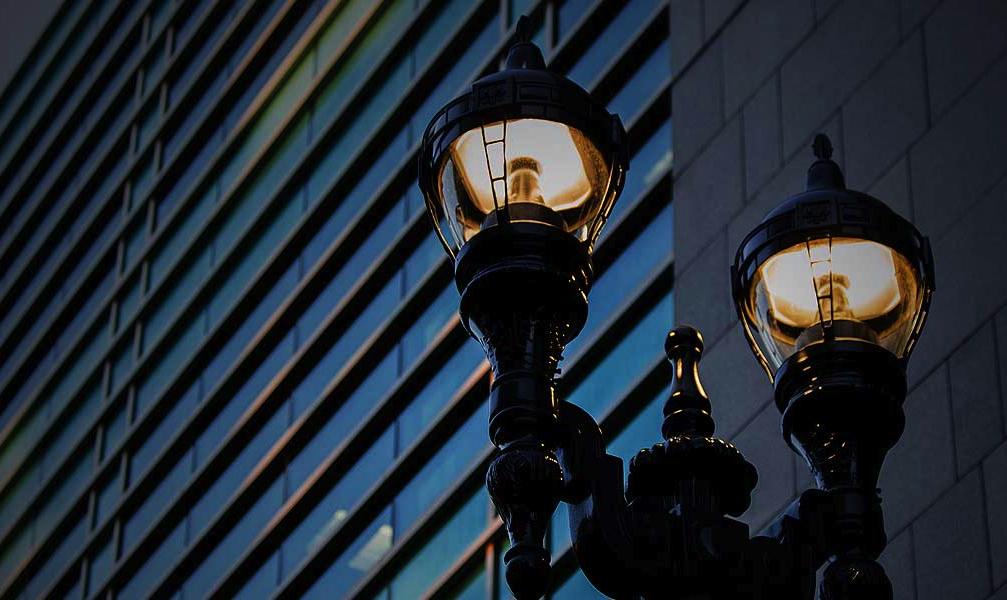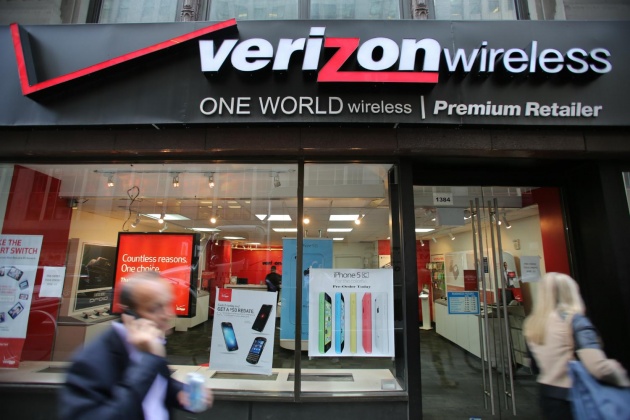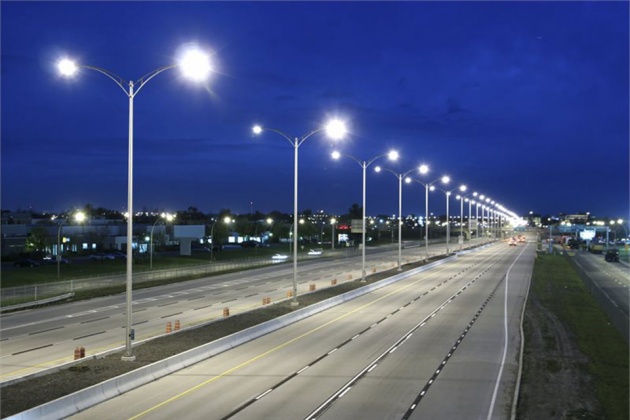
George Washington crossing the Delaware River during the American Revolution. Don’t be lulled into inaction like the British in Boston Harbour in 1773….IoT will be the next revolution in the lighting industry and you need to be prepared.
Gordon Routledge of Revo reports: The next revolution in lighting has arrived in the form of IoT (Internet of Things) and it’s going to change everything.
I’ve been talking about the technological leap forward that IoT represents with a lot of people in the lighting industry, but mostly I am met with blank looks whenever I raise the topic. IoT is even dismissed by some as something that won’t be coming to fruition any time soon.
Ironically, I used to get exactly the same response when I spoke about LEDs some 15 years ago. Change takes time as Bill Gates once said:

I tend to be an early adopter of technology but sometimes I fail to spot the trend. I could not, at first, for example, understand YouTube. Why would you want to make your own video and share it on the Internet? Why would you want to watch that video on a tiny screen on a mobile phone, while sitting on a bus? Yet 11 years on Lux has its own YouTube channel, which has clocked up over 1.4 million views. This is, of course, quite pathetic, when placed in comparison with the multi-millions of views that funny cat videos attract.
The birth of YouTube came well before smartphones and high speed mobile connectivity, it needed some other megatrends to develop for it to rise to its full potential
Now, let’s get one thing clear, the term ‘smart’ is not a replacement for dimmable. Just because you can dim your lights with a smart phone does not mean that you are at the forefront of the IoT revolution. Instead IoT hides in various overused and sometimes difficult to understand terms, Connected Lighting, Smart Cities, LiFi and PoE, being just a few. These are the trends that are helping IoT to take off.
Verizon, the American communications company have bought Sensity in order to widen their IoT offering.
It was jaw dropping for our audience at the time, but Hugh was right on the money. While Sensity’s gun shot detection app may not find a ready use in Europe, Verizon clearly see value in some of their products that they can offer to their millions of subscribers, leveraging the data collected by millions of lighting points.
The Amazon Echo, which allows users to switch on their lights with the sound of their own voice.
For years we have talked about the death of the light switch and the reason given to prevent this is that people don’t want to reach for a smart phone in the middle of the night to turn the lights on, even though your smart phone is surely going to be closer to your bed than the nearest light switch.
The giving of verbal instructions could well be the true intuitive lighting control, but it won’t work for me, as my wife says I have a habit of talking in my sleep, and lighting is frequently the subject.
The Yellow Dot program allows manufacturers to develop LEDs that work with Philips’ indoor positioning technology.
Of course, Amazon won’t be making lights, although they do have their own brand, Amazon Essentials, so rule nothing out when it comes to anticipating the next move of this cunning company.
Amazon currently relies upon other manufacturers to make devices compatible with Alexa, such as LiFx smart lamps. If I made residential lighting controls I would be very concerned about this move. Lighting control is moving from the cupboard to being in the lamp, and the user interface is migrating from the wall plate to an Amazon owned device.
It also gets Philips away from the dirty business of having to sell rapidly commoditising fixtures. Instead they simply collect data from lighting and sell it on to the end user. Thus data starts to replace lamps as a continuous revenue stream.
These are, of course, just announcements from the last week. But if you throw into the mix Cisco and Acuity Brands buying tech companies with gusto and huge, but lesser known, companies such as Delta Electronics who snapped up Loytec Electronics earlier in the year, you start to realise that the stage is being set for a revolution.
Big technology companies want to use the installation of LEDs to harvest as much data as they can.
It’s becoming clear that big technology companies want to be active on the lighting scene. They don’t want to join in our fun debates about standards, colour quality, lamp bases, glare and flicker though. All they want to do is gain access to the billions of lighting fixtures in the word and harvest the data they collect, enabling new business models to be built that don’t exist today.
You may not believe me, and I’m sure you can find hundreds of reasons as to why it just will not happen…but, read my lips, in ten years time IoT will be on everyone’s mind.
www.novelenergylighting.com
intelligent connected lighting · internet connected lighting · internet of things · iot · lux · Novel Energy Lighting

Looks like a streetlight, acts like a computer: GE LED streetlights in San Diego, where intelligent, connected lighting could monitor things like traffic and crime. The new ‘Current’ services group embraces CEO Jeff Immelt’s industrial internet strategy, treating LEDs as computers that route information. The conventional lighting group -no longer called GE Lighting- keeps the old stuff. It’s possibly for sale.
How do you make a viable business out of selling price-wracked LED lighting? If you’re a big industrial conglomerate like General Electric Co., you basically stop treating the bulbs as a sales and profit item, and instead consider them as a tool and a cost in a radically reshaped model that relies on selling a wide range of industrial and commercial services.
That is the take-away message from the $148.6 billion industrial giant’s most recent reorganisation of its lighting business in which it moved commercial and industrial LEDs into a broad new $1 billion “startup” energy services business called Current.
Less well-known in the shift: GE also quietly rubbed out its venerable GE Lighting escutcheon, and rebranded it as the Consumer and Conventional Lighting segment, including incandescent and fluorescent lighting as well as residential LEDs. Some observers expect GE to eventually sell that group, which meanwhile will continue to emphasise the sales of bulbs rather than fully embracing the newfangled service ethos of Current.
The idea of Current is that LEDs with all of their digital proclivities – including sensor and network connections – will be intelligent cogs in a wheel collecting and disseminating data for GE’s commercial and industrial customers. A Walmart might use LED-based ‘visible light communication’ to watch shoppers around physical stores and entice them with tailored promotions that the retailer sends to individuals’ phones. A city like San Diego might use streetlight sensors to monitor and manage traffic, crime, air quality and many other things.
It’s all part of GE CEO Jeff Immelt’s overarching ‘industrial internet’ strategy. Immelt has staked the future of the company on digitally connecting the tools and objects of the industrial world to create nothing less than what he calls ‘the next industrial era.’
‘GE is leading the way towards an age of brilliant machines that can harness reams of data to deliver transformative progress for people and businesses around the world,’ Immelt said when delivering the company’s annual 2014 results earlier this year, calling the industrial internet, ‘the connective tissue of twenty-first century infrastructure,’ and ‘the most important initiative I have led at GE.’
ANYTHING THAT CAN BE DIGITISED WILL BE
GE’s goal is to embed and connect sensors into everything in its habitat, whether it’s jet engines, gas turbines, locomotives or light bulbs. Those networked sensors would allow customers to gather data that helps them run the assets more efficiently, and users could leverage for other business purposes, such as analyzing shoppers’ movements.
From a lighting perspective, Current – officially called ‘Current, powered by GE’ – will not only help a commercial user engage with customers or manage inventory. It would also feed LED-linked information into GE’s cloud-based analytical software called Predix that scrutinizes mountains of data from a users’ solar panels, energy storage devices, electric vehicle charging stations and other sources, and helps make the most efficient use of electricity and decide things like when to sell excess power to the grid in the case of users generating their own.
‘It’s all about bringing to our customers what they tell us they’re looking for from a company like GE, and that’s to help them in a more holistic way solve a burning problem, which is how they become more energy efficient, more sustainable, and think in more of a solutions oriented approach (rather than ) a one-off solution or point solution,’ Current CEO and former GE Lighting CEO Maryrose Sylvester told Lux in an interview.
Current potentially puts teeth into Immelt’s industrial internet bite. And it could restore the financial outlook for the lighting business, where revenues from Sylvester’s so-called ‘point solutions’ appear to be in decline, or static at best. A year ago, around the time of GE’s last lighting reshuffle, the company told Lux that lighting had accounted for about $3 billion in revenue in 2013. Published reports indicate that the number
fell to around $2.5 billion in 2014.
Sylvester would not verify the decrease. Publicly held GE does not break out lighting revenues in its financial line reporting. It includes them as part of ‘appliances & lighting’, a segment that includes washers and dryers and that GE is unloading to Swedish appliance firm Electrolux in a deal that has been delayed by antitrust scrutiny. The company’s Current press release last week described lighting as a $3 billion business.
PRICE DECLINES AND GUNSHOTS
While volume sales of LED lamps have grown, prices have dropped considerably. Three years ago they were around $25. Consumers balked, even with LEDs’ compelling attributes of providing 80-to-90 percent energy reduction, and lasting for a reputed 20 years or more. Today, sub-$5 prices are common for a single bulb; US retailer Home Depot is selling a 3-pack of GE 60-watt equivalent lamps for $10.97, or about $3.65 per unit.
‘The paybacks are getting to a point where it becomes a really good choice,’ notes Sylvester.
A good choice for consumers, but not one that supports a long term profitable business for GE, especially considering that there isn’t much of a replacement market for a product that lasts 20 years or more. Making things even tougher for an incumbent company like GE is that it continues to carry the costs of a traditonal lighitng business, including factories. Even as GE reported on Friday (16 Oct) that LED revenue was up 65 percent for the third quarter and now represents 39 percent of the lighting business, the cost and price outlook almost certainly taints the profits.
Thus, GE is moving to a Current-branded service-based business model, in which LEDs are a sort of loss leading but vital tool in a data services scheme. Those services are potentially as varied as anything that can be digitised in the potentially ubiquitous Internet of Things.
For example, GE is already piloting smart, Predix-connected streetlighting
in San Diego and in Jacksonville, Fla., where sensors mounted on luminaires are helping with things like traffic and emergency response. Public outdoor smart city lighting schemes are
taking hold in cities around the world, not just from GE, supporting a wide variety of operation such as parking, traffic, air quality, noise and even monitoring the bird population.
In an acoustic addition to its sensor stable, GE at the end of September began working with SST Inc. to use that company’s ShotSpotter technology to detect gunshots, which could link into police force and public safety operations.
SPY LIGHTS FOR RETAILERS
GE’s smart lighting reach extends to indoor environments such as Wal-mart and Walgreens – the largest drugstore chain in the US – which are already using GE LED lighting for energy saving purposes. Sylvester noted that GE is talking to both of them about possibly deploying visible light communication (VLC), a technology that GE is already piloting with two retailers each in the U.S. and Europe (it won’t reveal who).
Not to be forgotten in the brave new play of lighting-based digital services is that the LEDs will still, of course, provide illumination, even if lighting is ironically looking like an afterthought.
And while the LEDs will still offer significant energy advantages, those will become more de rigueur.
‘It’s our view that the energy efficiency benefit will be less material in a few years,’ notes Jed Dorsheimer, an analyst with investment bank Canaccord Genuity. ‘That’s not to say it’s less important. But the drivers toward solid state lighting will be about the other services and the things you can do when you digitise all these sockets.
‘For a large retailer, knowing what the floor traffic is on a real time basis and being able to harness that is probably more valuable in terms of inventory management than the energy savings are to their utility bill.’
Which is why GE, while retaining conventional lighting, will as Sylvester notes put ‘all the heavy investment…into the LED space.’
WITHER CONVENTIONAL LIGHTING?
That, in turn, rekindles speculation that GE will want to unload its traditional lighting business, now called Consumer and Conventional Lighting (CCL) after the breakup of GE Lighting into Current and CCL.
‘What happens to the GE Lighting legacy is a good question – I think it may mean that GE will be looking at selling that part of the business to somebody else, because in the end, it doesn’t form part of the core of GE,’ notes David Vos, an analyst with Barclays.
GE’s Sylvester says GE remains committed to the business, even after the breakup of GE Lighting. ‘We work to make sure we have the right products available for our customers when they need them,’ she says. Sylvester will oversee CCL as CEO; John Strainic will run it day-to-day as chief operations officer. Strainic had been general manager of GE’s North America consumer lighting.
The creation of Current marks the company’s latest attempt to stir up its LED business with an innovative business model. GE calls Current a ‘startup’ that groups together lighting with other existing business streams including revenue related to solar panels, electric vehicles and energy storage. It plans to grow those revenues from around $1 billion today to $5 billion by 2020.
It is piloting Current services with customers including Walgreens, Simon Property Group, Hilton Worldwide, JP Morgan Chase, Hospital Corporation of America (HCA), Intel and Trane, a brand of Ingersoll Rand, all of whom hope to drive energy efficiency, reduce costs and leverage data from connected devices like light bulbs.
‘It will be interesting to see how much commitment they’re truly going to make, or whether this is more of a marketing and PR type initiative,’ notes Canaccord’s Dorsheimer.
Wherever Current lies in the reality-to-PR spectrum, it’s coming from the very top of GE.
‘The combination of LEDs and analytics puts a computer where a light bulb used to be,’ CEO Immelt said earlier this year. ‘In cities around the world, GE is working to transform street lighting into the analytical brain of urban life. Today, lighting is becoming a high-tech infrastructure business. It is a gateway for most energy management solutions.’
Whether it is a profitable gateway remains to be seen.
—
Photo is from GE
ge fittings · ge lamps · ge led · ge lighting · intelligent connected lighting · novel enegy lighting · visible light communication








